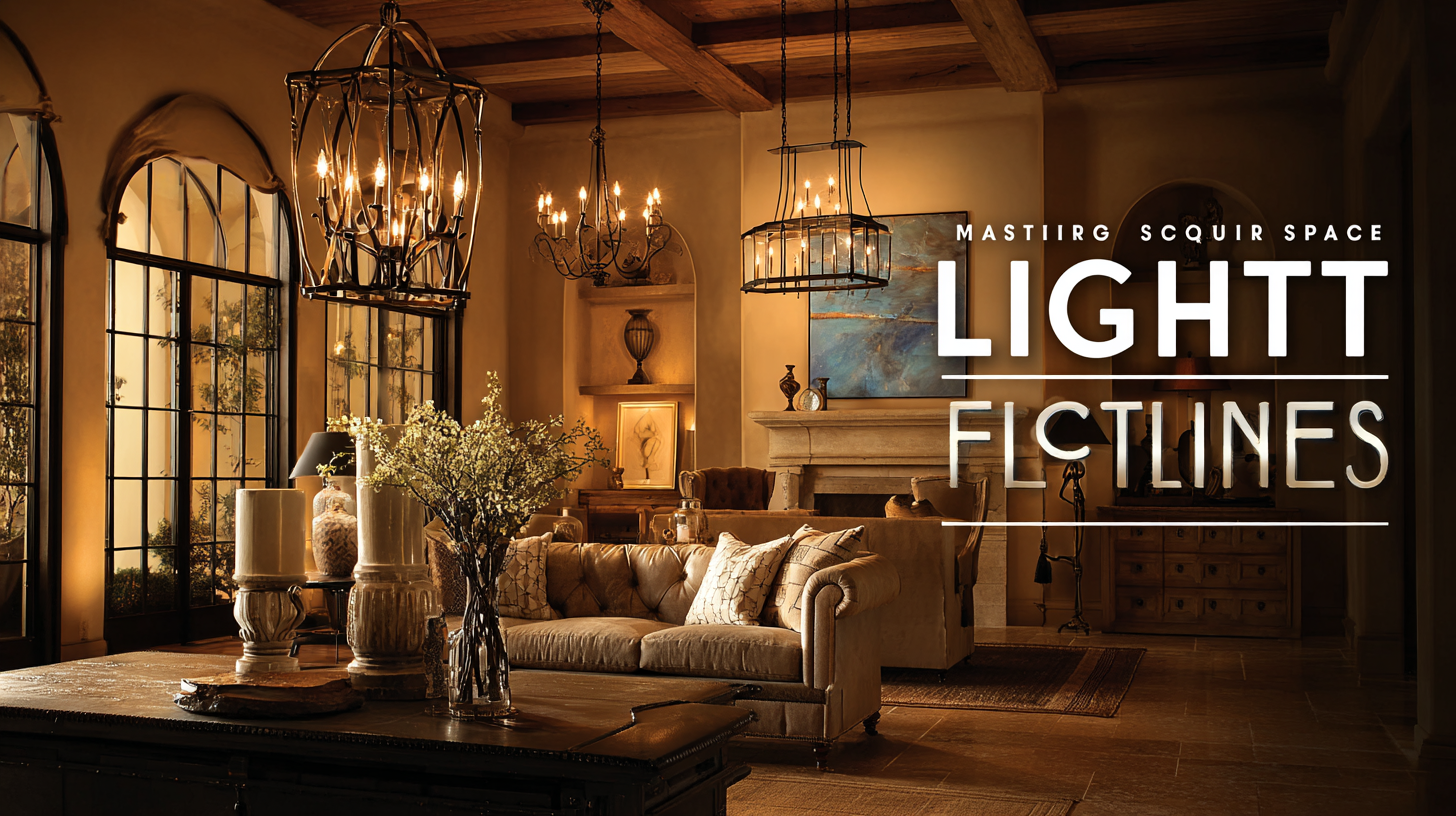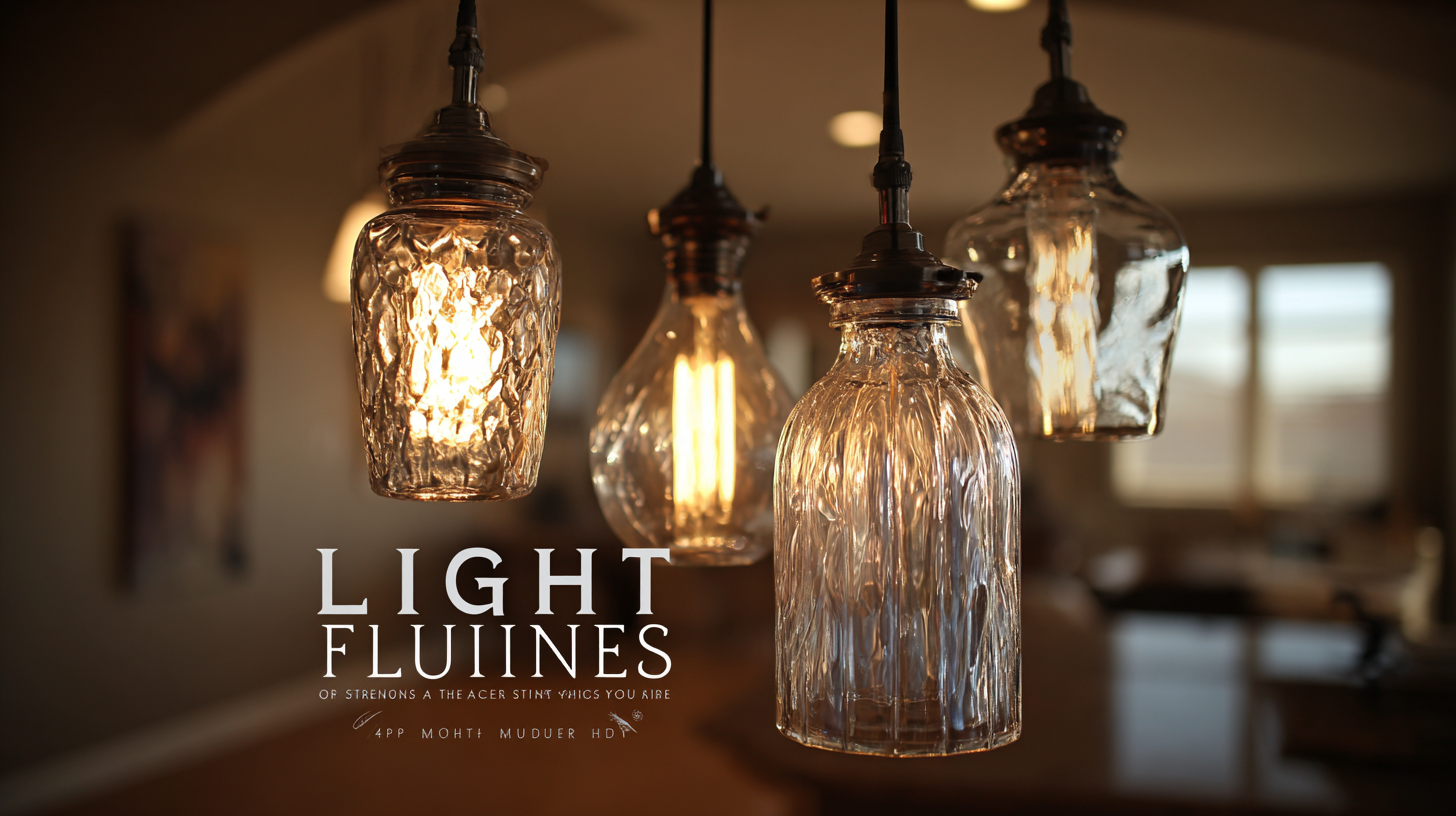Mastering Your Space: A Comprehensive Guide to Selecting the Best Light Fixtures for Any Project
In the realm of design and functionality, selecting the right light fixtures is crucial not only for aesthetic appeal but also for meeting industry production standards. According to a recent report by the U.S. Department of Energy, lighting accounts for approximately 15% of an average home's electricity usage, underscoring the importance of energy-efficient choices. Furthermore, the Illuminating Engineering Society (IES) emphasizes that proper lighting enhances productivity and mood in both residential and commercial settings. However, many projects face challenges related to finding the optimal fixtures that comply with both safety and efficiency standards. This comprehensive guide aims to navigate the complexities of choosing the best light fixtures for any project, ensuring that designers and homeowners alike can illuminate their spaces while adhering to industry best practices.

Choosing the Right Light Fixtures: Key Considerations for 2025
When it comes to selecting light fixtures for your space in 2025, a few key considerations can guide your decision-making process. First and foremost, functionality should be at the forefront. Consider the primary purpose of the room—whether it’s for work, relaxation, or entertainment—and choose fixtures that enhance the intended atmosphere. For instance, adjustable lighting can be beneficial in a home office, allowing you to control brightness levels based on tasks, while softer ambient lights might work best in living areas to create a cozy environment.
Another critical aspect to consider is energy efficiency. With the ongoing emphasis on sustainability, opting for LED fixtures not only reduces energy consumption but also offers long-lasting performance. Additionally, keep an eye on emerging smart lighting trends. Smart fixtures that can be controlled via apps or voice commands are becoming increasingly popular, providing both convenience and the ability to customize lighting scenes for different occasions. By prioritizing these considerations, you can choose fixtures that not only illuminate your space effectively but also align with modern trends and your personal style.
Choosing the Right Light Fixtures: Key Considerations for 2025
Innovative Trends in Light Fixture Design for Modern Spaces
 In recent years, innovative trends in light fixture design have transformed modern spaces, combining functionality with artistic expression. According to a report by Research and Markets, the global lighting market is projected to reach $158 billion by 2026, driven by advancements in LED technology and sustainable design practices. This shift reflects a growing consumer preference for energy-efficient options that also serve as stylish focal points in interior design.
In recent years, innovative trends in light fixture design have transformed modern spaces, combining functionality with artistic expression. According to a report by Research and Markets, the global lighting market is projected to reach $158 billion by 2026, driven by advancements in LED technology and sustainable design practices. This shift reflects a growing consumer preference for energy-efficient options that also serve as stylish focal points in interior design.
When selecting light fixtures, consider the role of versatility in design. Multipurpose fixtures that blend seamlessly with varying decor styles are becoming increasingly popular. For instance, pendant lights can elevate dining areas while providing ambient lighting. Tip: Explore fixtures that allow for customizable configurations, enabling you to adjust their height and brightness based on your space's needs.
In addition to versatility, technology integration is key. Smart lighting systems are gaining traction, allowing users to control lighting remotely and set the mood with just a tap on their smartphones. A study from Statista indicates that the smart lighting segment will surpass $21 billion by 2025. Tip: Look for fixtures compatible with smart home systems, ensuring a cohesive and modern lighting approach that enhances both convenience and energy savings.
Energy Efficiency: How to Select Fixtures that Save Energy in 2025
As we move toward a future focused on sustainability, choosing the right light fixtures has become essential for energy efficiency. By 2025, the demand for fixtures that conserve energy and reduce environmental impact will be more pronounced than ever. When selecting lighting for your space, look for fixtures that are equipped with LED technology, which uses up to 80% less energy than traditional incandescent bulbs. Additionally, consider the lumens output, as brighter fixtures can often replace the need for multiple less efficient bulbs, providing better illumination while using less energy.
It’s also important to pay attention to the fixtures’ compatibility with smart technology. Smart lighting systems allow for automated schedules, motion sensors, and remote controls, which can significantly reduce energy usage when rooms are unoccupied. Furthermore, Energy Star-rated fixtures ensure that you are investing in products designed for optimal efficiency and performance. By making informed decisions about the light fixtures you choose, you can create an inviting and well-lit space while actively contributing to a more sustainable future.

The Impact of Smart Technology on Light Fixture Selection
The integration of smart technology into lighting design has revolutionized the way we select light fixtures. According to a report by MarketsandMarkets, the smart lighting market is projected to reach $22.9 billion by 2025, growing at a compound annual growth rate (CAGR) of 25.3%. This indicates a significant shift towards intelligent systems that enhance convenience, energy efficiency, and aesthetic appeal. Consumers are increasingly looking for solutions that seamlessly integrate with their smart home ecosystems, prompting designers and homeowners to prioritize smart compatibility when choosing fixtures for new projects.
Moreover, adopting smart lighting solutions can dramatically impact energy consumption. The American Council for an Energy-Efficient Economy (ACEEE) highlighted that smart lighting can reduce energy costs by up to 20-30%, depending on usage patterns and automation capabilities. As more light fixtures come equipped with features such as remote control, scheduling, and adaptive dimming, the selection process involves evaluating not only the aesthetic and functional aspects of the fixtures but also their ability to offer substantial energy savings and integrate with various smart devices. This shift towards smart technology is not just a trend; it's becoming a standard in modern lighting design, requiring both industry professionals and consumers to adapt accordingly.
Creating Mood and Ambiance: Lighting Techniques for Every Room
Lighting is an essential element in interior design, significantly influencing the mood and ambiance of every room. According to a report by the American Lighting Association, approximately 70% of consumers acknowledge that effective lighting elevates their overall home experience. To create the perfect atmosphere, it's crucial to understand how different lighting techniques can transform your space.
For instance, layering light sources—such as ambient, task, and accent lighting—can enhance the functionality and appeal of any room. In the kitchen, a combination of pendant lights over the island and under-cabinet lighting can not only make food preparation more efficient but also create a warm, inviting environment for gatherings.
Tips: When selecting fixtures, consider dimmable options to adjust the brightness according to the occasion. In living areas, soft, warm bulbs can foster relaxation, while brighter, cooler tones might be ideal for workspaces. Additionally, incorporating smart lighting technology allows you to customize your ambiance effortlessly, adapting to your needs throughout the day. Invest in a color temperature range of around 2700K to 3000K for major living spaces to maintain a cozy feel while providing enough clarity for activities.

